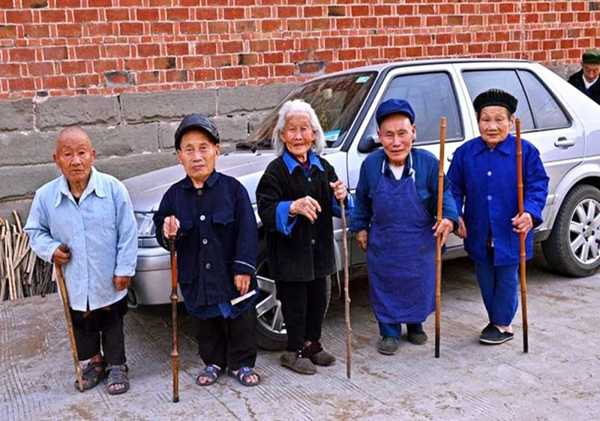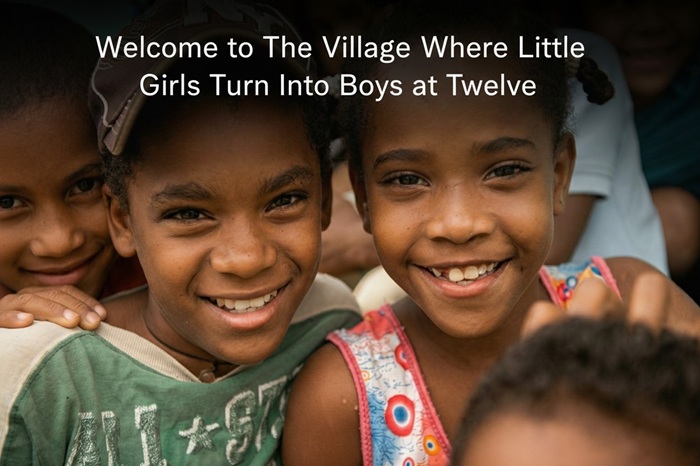Reports have claimed there is a remote village in Sichuan province where a large share of older residents stopped growing as children and remained very short for life. It has been reported that the place is named Yangsi, Mingyangsi, or 鸣阳寺/明阳寺 village, and the headlines have ranged from “the dwarf village” to “a community that stopped growing.”
Today, we will explain the real story behind the headlines. We will also examine what is reliably reported about the village often identified in Chinese-language media as 明阳寺村 (Mingyangsi, sometimes transcribed as Yangsi), the evidence and competing explanations for the unusual pattern reported there, and how the story changed once infrastructure and health access improved. Where claims are uncertain or contradictory, this article flags them rather than repeating them as fact.
Where this story began: the village and its claims
Multiple Chinese-language reports and human-interest pieces place a small settlement called 明阳寺村 or 鸣阳寺村 in Zizhong County (资中县), Sichuan province. Local reporters, social-media posts and feature writers have described a handful of families in that area—especially older residents—who are short in adult height, sometimes reported as averaging near 80–100 cm. These pieces tend to reference oral history: villagers saying that, beginning in the 1930s and again decades later, groups of children developed joint pain, stopped growing and remained small through adulthood. The story appears in dozens of local and national outlets over the past 10–15 years, often recycled with small variations.
Those reports commonly add a few details: (1) the phenomenon primarily affected certain generations (older adults), not necessarily children born in recent decades; (2) neighbors and outsiders who left the valley later had children who grew to normal height; (3) the village lies in a narrow valley near the Tuo River and used a local well for generations; and (4) local leaders and villagers remember episodes of acute joint pain in the past that they link to the growth problem. These elements recur across multiple articles and community interviews.
What the reporting actually shows (and what it does not)
It is important to separate three things: verifiable facts, plausible explanations offered by journalists or villagers, and internet myths. What we can reasonably say, based on the available reporting:
The village exists in Sichuan and has been reported in Chinese media as having an unusually high number of short-statured older adults.
The phenomenon appears strongest among older cohorts; many articles note that younger people from the same families now reach heights closer to national norms, after changes to water and diet in the late 20th and early 21st centuries.
Local explanations are mixed: villagers and a few non-academic reports mention a contaminated well, changes in staple food or local fungus on grain, or a mysterious epidemic of joint pain decades ago. These are hypotheses rather than proven causes.
What we cannot confirm from public reporting or peer-reviewed literature:
Any reliable, peer-reviewed medical study proving a single cause (genetic, toxic or infectious) for the growth arrest in that community. The accessible media reports do not cite formal epidemiological or genetic studies published in established medical journals.
Where reporting is weakest, it is in precise medical measurement (systematic height surveys), laboratory testing (longitudinal water, soil, or tissue studies), and controlled comparisons to neighboring villages. Those gaps explain why competing theories persist.
Local memory and the “well” hypothesis
One of the most persistent local explanations is straightforward: the village used a central well for decades; after the 1930s the well’s water changed in quality, and villagers who drank it for years developed a condition that arrested growth. Several human-interest articles and one widely shared Sina piece repeat the claim that testing of the old well water showed deficiencies of certain trace elements, or contamination, and that once a new water source was introduced the problem faded in later generations. The narrative is tidy and understandable: fix the water, children grow normally again.
Two caveats matter. First, public reports use vague language about “experts” testing water; they rarely publish full laboratory data, sample dates or the names of institutions that performed the analyses. Second, environmental explanations are plausible but not proven in the public record: poor nutrition and endemic infections can stunt growth, and both relate to water and food systems. But proving a direct causal chain—well contamination → childhood joint pain → permanent growth arrest—requires more rigorous study than the human-interest pieces provide.
Genetics or environment—why the founder effect story is less likely here
When non-specialists encounter a cluster of a physical trait in a small population, genetics is a natural hypothesis. The “founder effect” and in-breeding raise the probability that a recessive disorder will appear with higher frequency in small or isolated groups. That phenomenon explains true hereditary dwarfism clusters elsewhere. However, the historical pattern reported in Mingyangsi does not map cleanly to a simple inherited disorder:
- The accounts emphasize abrupt onset across diverse families during defined historic periods (1930s and later), which leans toward environmental or infectious explanations.
- The observation that those who left the village produced children of normal stature weakens the idea of a fixed genetic founder effect confined to the entire community. Genetics could explain family clusters but not a sudden village-wide cohort effect beginning in a single decade.
That said, the absence of published genetic studies means we cannot rule out mixed causes: an environmental insult interacting with genetic susceptibility could produce clustered outcomes. The responsible conclusion is that genetics alone is unlikely to explain the pattern described in local reporting.
Medical features reported by locals and journalists
Accounts often include two consistent clinical-sounding details. First, villagers describe intense hip, knee and ankle pain preceding growth arrest. Second, those affected matured sexually and cognitively in expected ways, but their skeletal growth slowed or stopped around early childhood. Multiple news articles repeat those patient histories as told by village elders and local leaders.
Those details are medically interesting because they suggest a disorder (or disorder cluster) that affects growth plates or bone metabolism rather than global malnutrition. Still, without diagnosis from clinicians trained in pediatric endocrinology or orthopedics and without radiological and laboratory evidence published in peer-reviewed outlets, the reports remain descriptive, not diagnostic.
How infrastructure change altered the next generation
What many reports agree on is this: once the village gained a new water source and better food transport in the late 20th century, children born after that transition generally grew to heights closer to national averages (often cited as 1.4–1.6 m for younger cohorts in the media pieces). If accurate, that observation supports an environmental or nutritional role—improved water and diet coincided with normal growth patterns. It also explains why the phenomenon appears concentrated among older adults.
This shift is the most hopeful part of the story. It suggests that socioeconomic development and public-health investments—clean water, vaccines, regular pediatric care—may have changed a community’s trajectory. However, media reports again rarely provide raw data, only interviews and anecdotal measurements.
How outsiders have amplified and distorted the narrative
As with many unusual local stories, the “dwarf village” label traveled quickly across social platforms and foreign clickbait sites. A handful of blogs and videos repeated glaringly inaccurate claims—such as that the whole village or “everyone” was born a dwarf or that the disorder persisted unchanged into the present day. That amplification flattened nuance, ignored the generational dimension, and sometimes used photos without context.
That tendency illustrates a wider problem: stories about bodies and health can easily either sensationalize or stigmatize. Journalists and content creators who catch an exotic angle often forget to verify medical evidence or to center the voices of local people beyond spectacle.
What a responsible investigation would need
- To move this story from folklore and human-interest reporting to robust science, researchers would need to do the following:
- A verified census and standard height measurements for all age cohorts.
- Detailed family pedigrees to test for inheritance patterns.
- Radiographs and endocrine panels for affected individuals to assess growth-plate and hormonal function.
- Environmental sampling (water, soil, stored grain) with documented chain of custody and repeated tests over time.
- Infectious-disease and mycotoxin screening, since fungal contamination of staple grains can cause chronic illness.
- Comparison of health and growth data from neighboring villages with similar geography but different water sources.
No public record indicates that such a multidisciplinary study has been published; the articles available rely on interviews, local memory and small clinical anecdotes. Until formal study appears, any single-cause claim must be treated as provisional.
How villagers remember the past — dignity and resilience
Perhaps the most important part of this story is how local people tell it. Accounts show a community that remembers episodes of suffering and then adapted. The older residents who remain short in stature have lived full lives: raising children, farming, and taking part in local life. Younger people moved out, gained education and found work in towns. Development brought new infrastructure and a different future for the next generation. Those human realities are more valuable than the sensational headline.
Journalists who spent time in the valley emphasize that the villagers are not defined by a physical trait. They are neighbors, elders, parents and custodians of land and memory. That perspective is essential when reporting on health phenomena that intersect with culture and poverty.
What the story means for public health and anthropology
Two broader lessons follow.
First, this case exemplifies how local environmental conditions and poverty can create clustered health outcomes that look mysterious without basic public-health investigation. Access to clean water, improved nutrition and regular health checks can change generational outcomes.
Second, the story reminds anthropologists and social scientists that isolated communities are living archives of both genetic and environmental history. They deserve careful, ethically conducted study that centers consent, benefits for the community, and clear public reporting.
Final note:
The best available reporting shows a real village in Sichuan with a higher-than-expected number of short-statured older residents and a plausible history of environmental hardship decades ago. It does not support the lurid claim that “everyone” in the village is born a dwarf or that a single genetic disease made the village an eternal outlier. The balance of evidence—oral history, timing, and the normalization of height in later generations—leans toward an environmental or infectious explanation, possibly interacting with diet and local medical access, rather than an all-encompassing hereditary condition.
What remains missing is a careful, peer-reviewed epidemiological and biomedical study. That gap matters because sensational accounts can stigmatize people who already face vulnerability, while careful study can yield insights that protect other communities from similar health threats.






